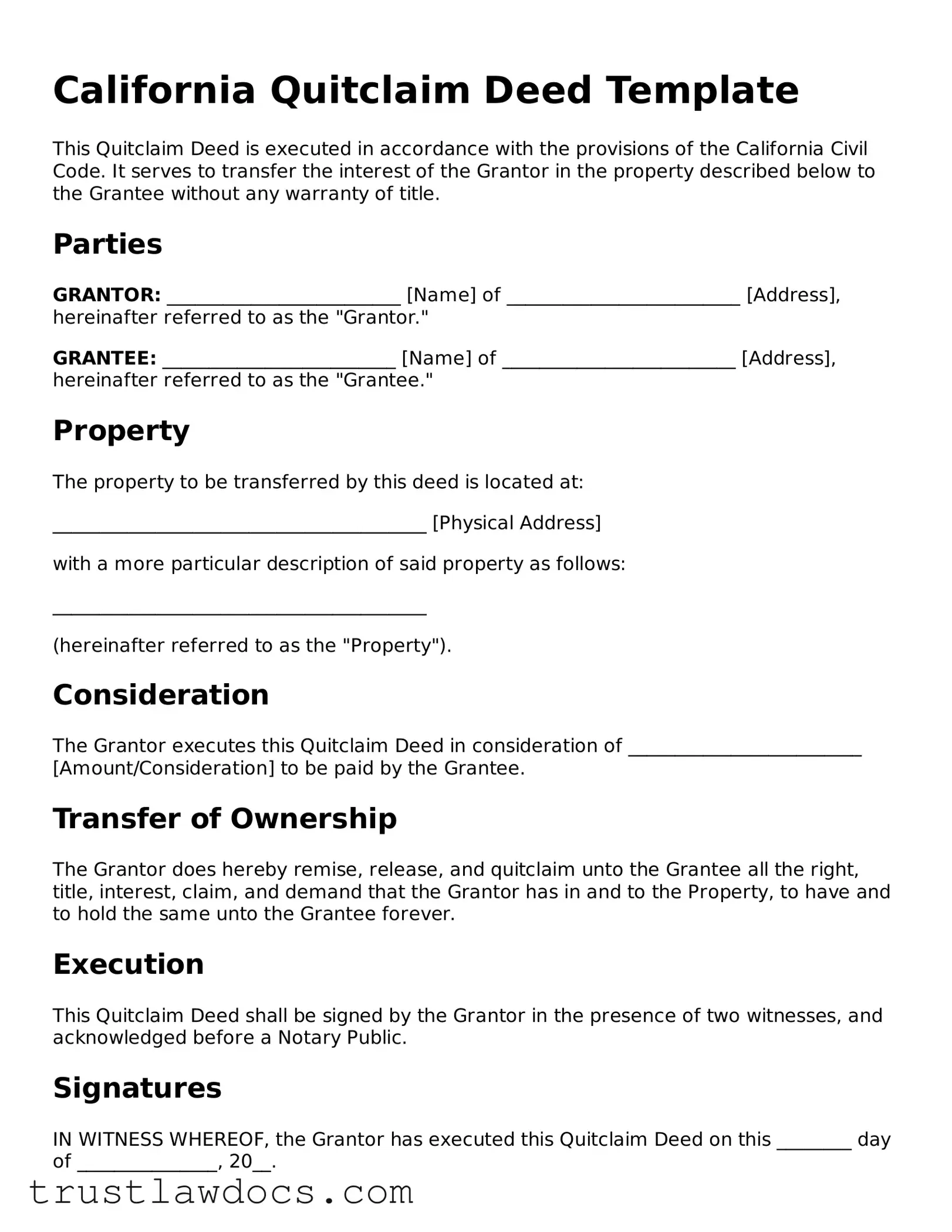California Quitclaim Deed Template
This Quitclaim Deed is executed in accordance with the provisions of the California Civil Code. It serves to transfer the interest of the Grantor in the property described below to the Grantee without any warranty of title.
Parties
GRANTOR: _________________________ [Name] of _________________________ [Address], hereinafter referred to as the "Grantor."
GRANTEE: _________________________ [Name] of _________________________ [Address], hereinafter referred to as the "Grantee."
Property
The property to be transferred by this deed is located at:
________________________________________ [Physical Address]
with a more particular description of said property as follows:
________________________________________
(hereinafter referred to as the "Property").
Consideration
The Grantor executes this Quitclaim Deed in consideration of _________________________ [Amount/Consideration] to be paid by the Grantee.
Transfer of Ownership
The Grantor does hereby remise, release, and quitclaim unto the Grantee all the right, title, interest, claim, and demand that the Grantor has in and to the Property, to have and to hold the same unto the Grantee forever.
Execution
This Quitclaim Deed shall be signed by the Grantor in the presence of two witnesses, and acknowledged before a Notary Public.
Signatures
IN WITNESS WHEREOF, the Grantor has executed this Quitclaim Deed on this ________ day of _______________, 20__.
_________________________ [Grantor's Signature]
_________________________ [Printed Name]
STATE OF CALIFORNIA
COUNTY OF __________________
On __________________ before me, _________________________ [Notary's Name], Notary Public, personally appeared _________________________ [Grantor's Name], who proved to me on the basis of satisfactory evidence to be the person(s) whose name(s) is/are subscribed to the within instrument and acknowledged to me that he/she/they executed the same in his/her/their authorized capacity(ies), and that by his/her/their signature(s) on the instrument the person(s), or the entity upon behalf of which the person(s) acted, executed the instrument.
I certify under PENALTY OF PERJURY under the laws of the State of California that the foregoing paragraph is true and correct.
WITNESS my hand and official seal.
Signature _________________________ [Notary's Signature]
(Seal)
